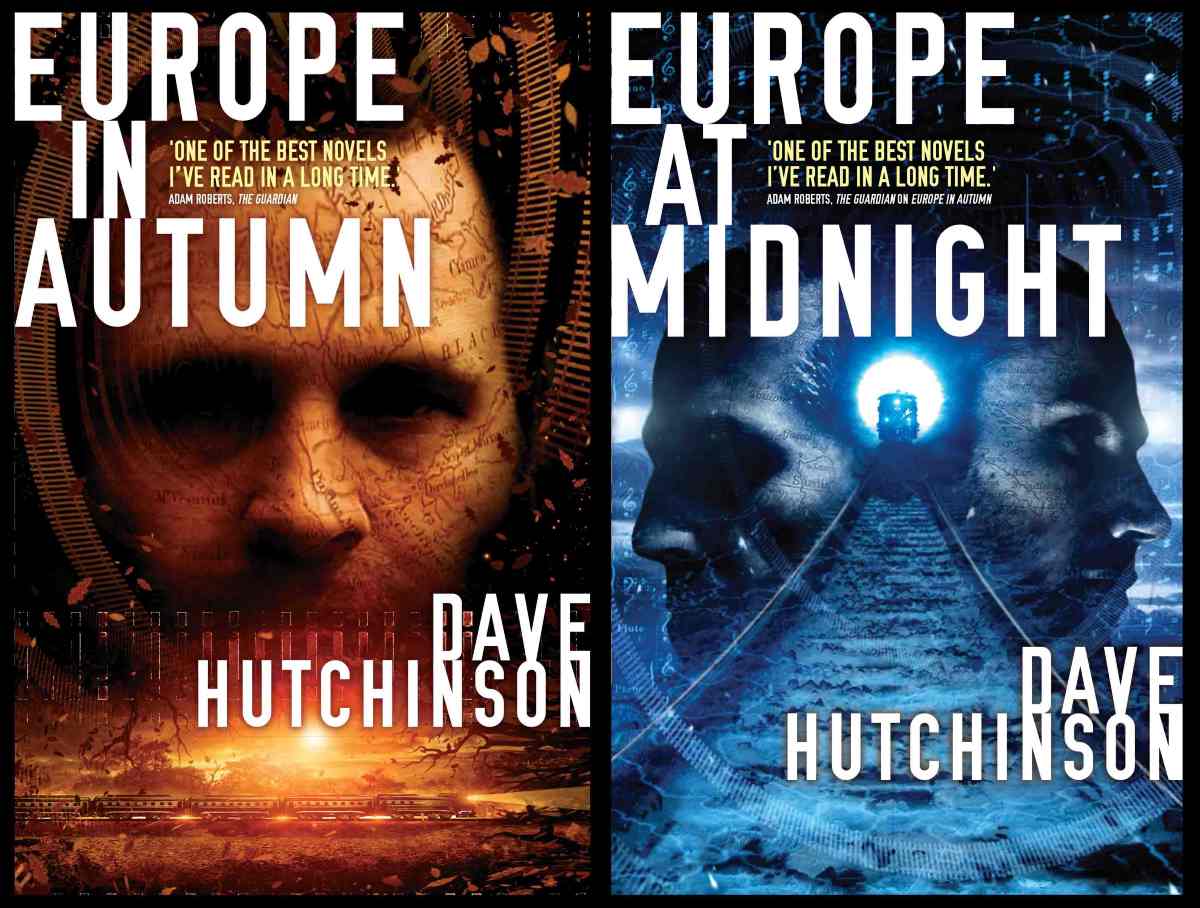 By coincidence, whilst I was reading 2013 Arthur C. Clarke nominee Nod by Adrian Barnes, sitting at the front of my local library were copies of 2015 nominee Europe in Autumn and its sequel Europe at Midnight. I’d heard great things about these books, but hadn’t gotten around to picking them up. Blessed are the libraries for they bring us great books.
By coincidence, whilst I was reading 2013 Arthur C. Clarke nominee Nod by Adrian Barnes, sitting at the front of my local library were copies of 2015 nominee Europe in Autumn and its sequel Europe at Midnight. I’d heard great things about these books, but hadn’t gotten around to picking them up. Blessed are the libraries for they bring us great books.
And Dave Hutchinson’s Fractured Europe sequence is great indeed. If the books of John Le Carré and China Miéville had children, this is how they might turn out. (This is a slightly odd comment as Le Carré’s son, Nick Harkaway, does write science fiction and the ones I’ve read are nothing like Europe in Autumn).
As the novel opens we find ourselves in near future Europe, post some unspecified but heavy-duty geopolitical upheavals. America is reclusive, Xian Flu has decimated the world’s population, and the European Union has broken up. It hasn’t just broken up, it’s shattered. Fragmented into numerous states and polities. There’s even a sovereign state that’s thousands of miles long. It’s a railway line that crosses Europe from Lisbon to Chukotka, Siberia. A 200-meter wide strip of land that’s declared independence. Being a self-confessed railway geek, that’s what drew me to these books.
The narrative meanders. It’s hard for much of the book to determine exactly what the overreaching story is. It’s only in the final quarter that the deft patchwork comes together and a bigger picture revealed.
Despite the lack of overriding imperative, Hutchinson’s writing is utterly compelling. Simple, unembellished prose that manages to be deeply evocative, conjuring perfect images of this fractured Europe. It manages to simultaneously demonstrate the absurdity of borders between peoples, whilst conveying the importance and significance of national identity.
The main focus of Europe in Autumn is Rudi, an Estonian chef in a Polish kitchen. When the novel opens we find him cooking for a group of violent Hungarian gangsters. His cool head and ability to function under pressure see him offered position in a espionage operation called The Coureurs (Couriers), an independent outfit dedicated to freedom of movement in a continent boxed up by borders.
With each chapter we learn a little more about Rudi and the movement he works for. The machinations of the book are pure Le Carré, with code words, dead drops and secretive alter egos. The resulting novel is beautifully balanced, intriguing, and glorious to be submerged in.
The second book in the sequence, Europe at Midnight, is much the same. It builds on the revelations of the first book. The two stories are seemingly separate, but gradually come together before intersecting beautifully in a major scene. As a pair, the books are a rare accomplishment.
Dave Hutchinson has managed to create something fresh and invigorating, whilst using mostly well-worn and comfortable devices. Reading the Fractured Europe books is like discovering your slippers have been moonlighting as a pair of Christian Louboutins. The books are stunning and make for effortless reading. It’s the sort of writing that belies the effort employed to craft each line.
I had thought Ishiguro’s The Buried Giant would be my favorite book of the year, but both Fractured Europe books run it close. Better yet, a third book in the sequence, Europe in Winter, is out in November, giving you plenty of time to catch up. What are you waiting for? Go read these excellent books, you won’t regret it.




